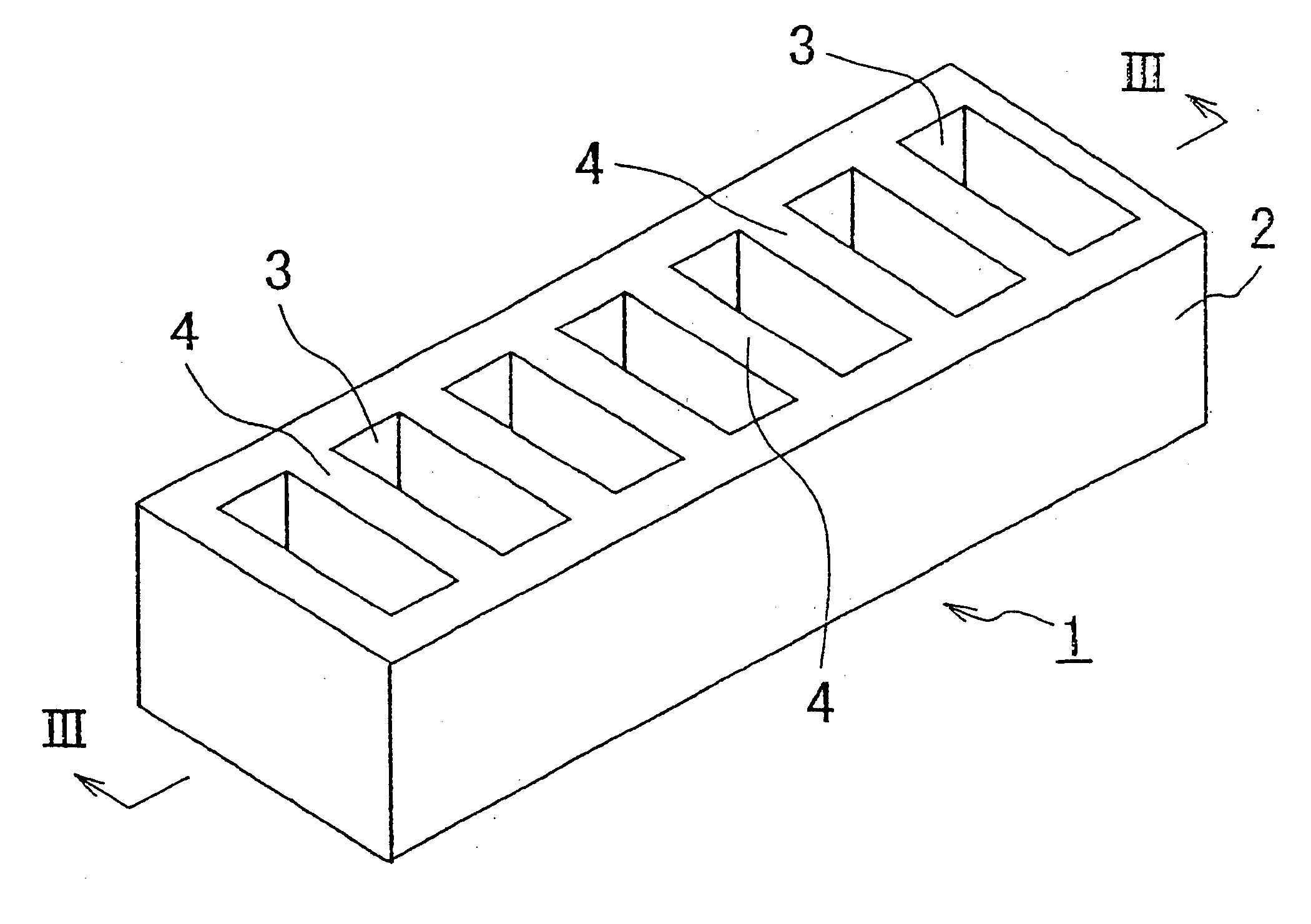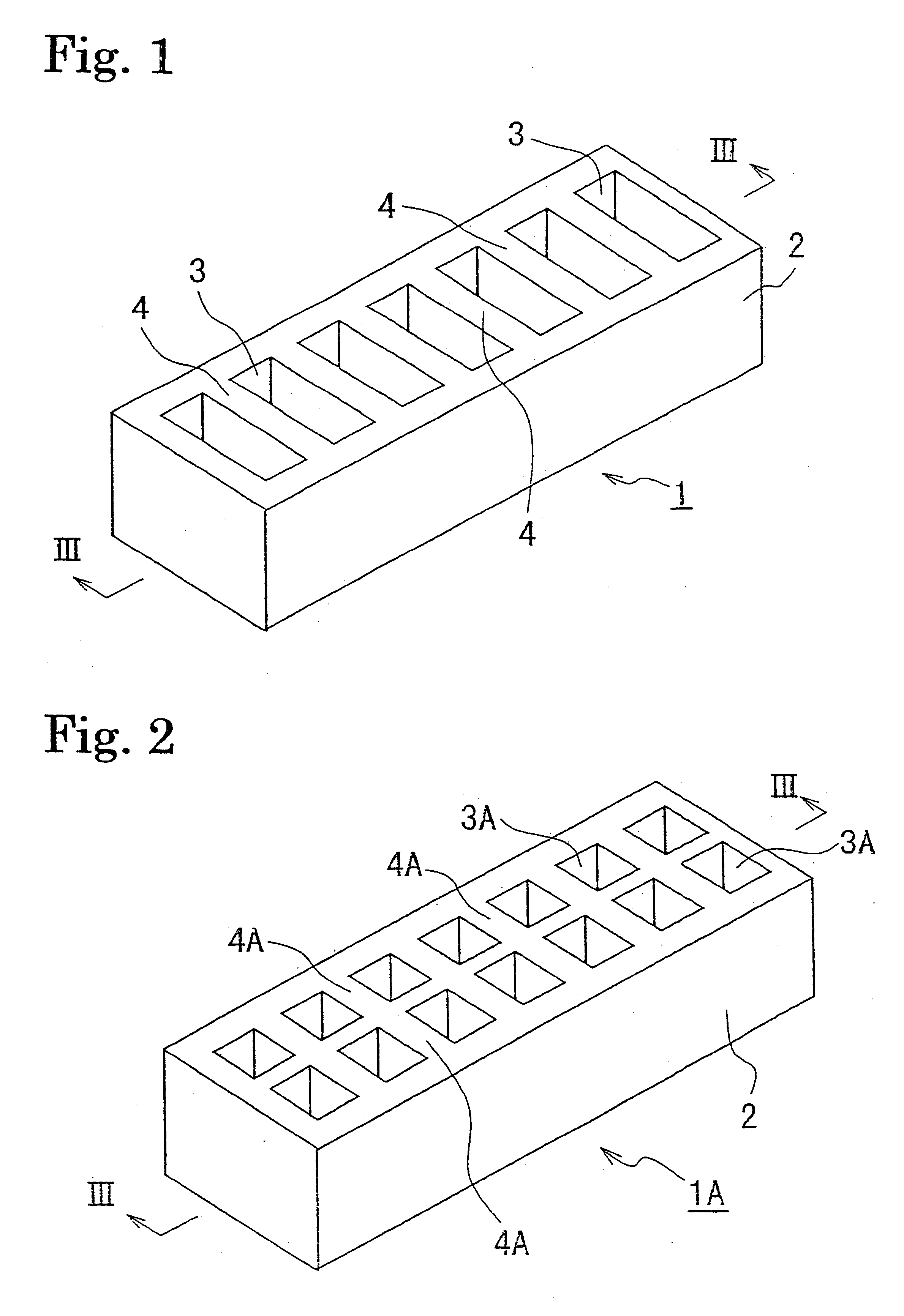Shock absorbing material
a technology of shock absorption and material, applied in the direction of shock absorption, elastic damper, pedestrian/occupant safety arrangement, etc., can solve the problems of poor shock absorption ability, inability to provide optimal structure utilizing the characteristics of polyurethane foam, and degraded visibility range, so as to reduce the head injury criteria and good shock absorption ability
- Summary
- Abstract
- Description
- Claims
- Application Information
AI Technical Summary
Benefits of technology
Problems solved by technology
Method used
Image
Examples
example 1
A shock absorbing material with the shape shown in FIGS. 1 and 3 was produced from a rigid polyurethane foam having a compression stress of 15 kg / cm.sup.2. The shock absorbing material comprises a planar member having an external size of 210 mm (in the longitudinal direction).times.60 mm (in the lateral direction).times.20 mm (in the vertical direction), with concave portions of 50 mm.times.10 mm.times.10 mm (depth) provided parallel with an arrangement pitch of 15 mm with a 5 mm thickness T of the wall parts, and a 28% excavation ratio.
The head injury criteria were measured for the shock absorbing material. Results are shown in Table 1.
example 2
A shock absorbing material was produced in the same manner as example 1 except that the concave portions were formed so as to have the with of the wall part and the excavation ratio of the values shown in Table 2, and the head injury criteria were measured. Results are shown in Table 2.
example 3
Ahead protecting material made of a rigid polyurethane foam 60 mm.times.450 mm.times.20 mm with an adhesive tape comprising a base material having a thickness of 3 mm made of a soft polyurethane foam with a 0.02 g / cm.sup.3 density having an acrylic adhesive material adhesive layer (thickness: 0.06 mm) formed on both sides thereof, attached as shown in FIG. 12A, was mounted to a ceiling material for automobiles at the position shown in FIG. 13A. After mounting the head protecting material, the ceiling material was transported and assembled into a car body.
When a head protecting material was mounted with an adhesive tape comprising a base material such as non-woven fabric, paper, plastic film, or the like, with an adhesive material applied thereon for forming an adhesive layer, falling off of the head protecting material occurred at the time of transportation and assembly. However, in this embodiment, even when the ceiling material was deformed during transportation or impact with ano...
PUM
| Property | Measurement | Unit |
|---|---|---|
| width | aaaaa | aaaaa |
| thickness | aaaaa | aaaaa |
| thickness | aaaaa | aaaaa |
Abstract
Description
Claims
Application Information
 Login to View More
Login to View More - R&D
- Intellectual Property
- Life Sciences
- Materials
- Tech Scout
- Unparalleled Data Quality
- Higher Quality Content
- 60% Fewer Hallucinations
Browse by: Latest US Patents, China's latest patents, Technical Efficacy Thesaurus, Application Domain, Technology Topic, Popular Technical Reports.
© 2025 PatSnap. All rights reserved.Legal|Privacy policy|Modern Slavery Act Transparency Statement|Sitemap|About US| Contact US: help@patsnap.com



